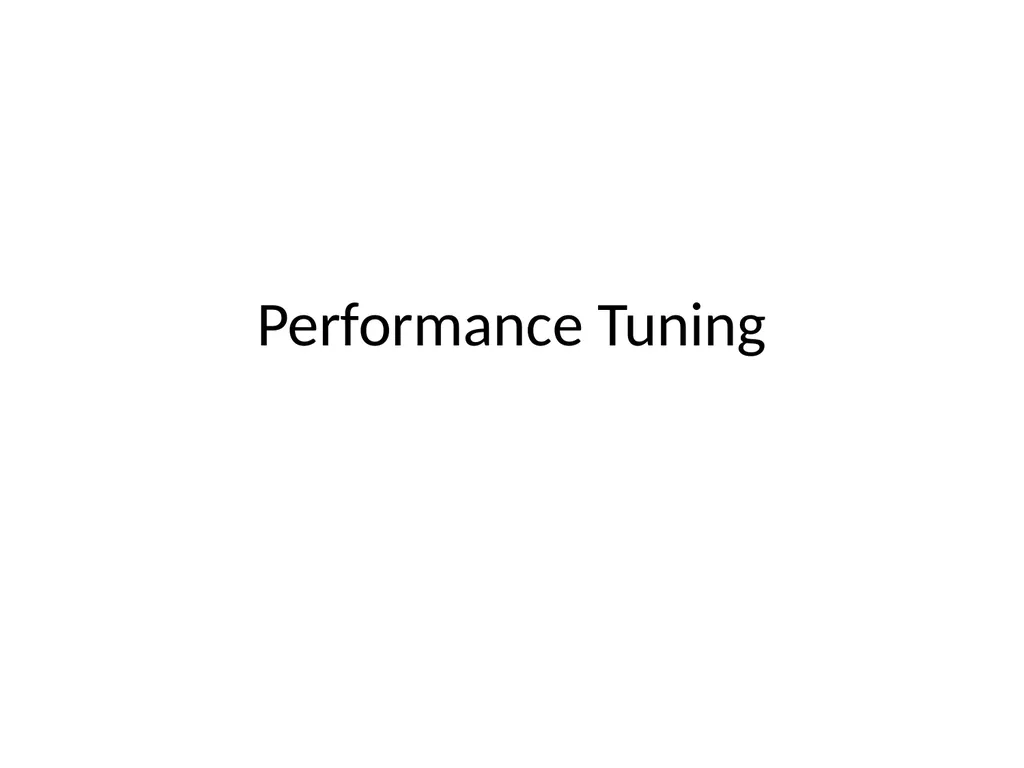
Author : aaron | Published Date : 2025-05-19
Description: Performance Tuning The Need for Tuning (1 of 2) You dont need to tune your code! Most important Code that works Most important Code that is clear, readable It will be re-factored It will be modified by others (even you!) Less importantDownload Presentation The PPT/PDF document "" is the property of its rightful owner. Permission is granted to download and print the materials on this website for personal, non-commercial use only, and to display it on your personal computer provided you do not modify the materials and that you retain all copyright notices contained in the materials. By downloading content from our website, you accept the terms of this agreement.
Here is the link to download the presentation.
"Performance Tuning The Need for Tuning (1 of 2)"The content belongs to its owner. You may download and print it for personal use, without modification, and keep all copyright notices. By downloading, you agree to these terms.













